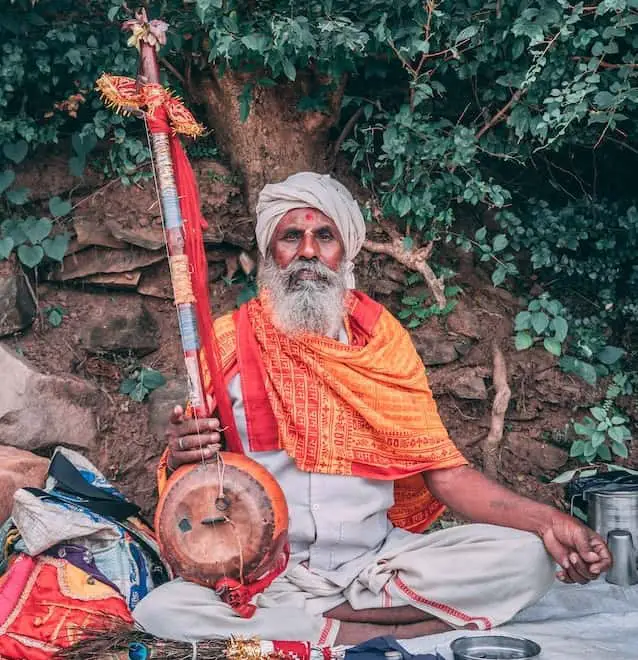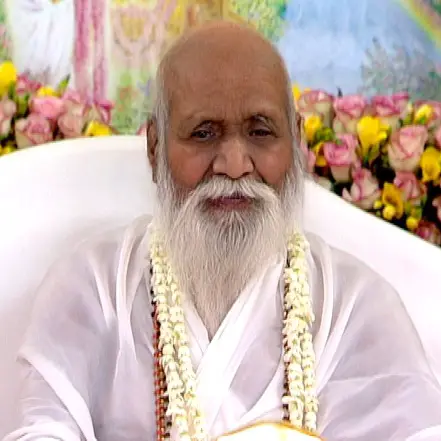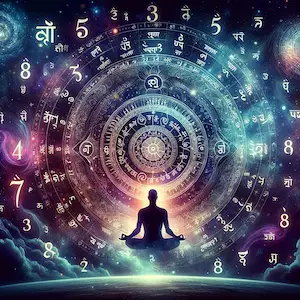Mantras are ancient sound vibrations that have been used in various spiritual practices for thousands of years. In India, mantras are an integral part of Hinduism, Buddhism, Jainism, and Sikhism. These sacred utterances are believed to have the power to transform our lives by invoking different energies, healing, and expanding our consciousness. In this article, we will explore the origin, significance, and benefits of Indian mantras, and how you can incorporate them into your daily practice.

Table of Contents
Mantras are ancient sound vibrations that have been used in various spiritual practices for thousands of years. In India, mantras are an integral part of Hinduism, Buddhism, Jainism, and Sikhism. These sacred utterances are believed to have the power to transform our lives by invoking different energies, healing, and expanding our consciousness. In this article, we will explore the origin, significance, and benefits of Indian mantras, and how you can incorporate them into your daily practice.
What are Mantras?
Mantras are a combination of sacred sounds, words, or phrases that are chanted, recited, or sung to invoke specific energies, deities, or intentions. The word ‘mantra’ comes from the Sanskrit language, which means ‘man’ (mind) and ‘tra’ (instrument or tool). Mantras are considered as a powerful tool to control the mind, develop focus, and connect with the divine. They are believed to carry a specific vibration that can alter our consciousness, emotions, and physical well-being.
History and Significance of Mantras
The use of mantras can be traced back to the Vedic period in ancient India, which dates back to 1500 BCE. The Vedic hymns were composed in Sanskrit, which is considered as the language of the gods. The mantras were chanted by priests during rituals and ceremonies to invoke the blessings of the gods and to create a sacred atmosphere.
As time passed, mantras became an integral part of different spiritual practices in India, such as Yoga, Tantra, Ayurveda, and Buddhism. Each tradition has its own set of mantras, which are chanted for different purposes, such as healing, protection, prosperity, and enlightenment.
How Do Mantras Work?
Mantras work by creating a specific sound vibration that resonates with the body and the mind. When we chant a mantra, the sound waves penetrate our physical and subtle bodies, affecting our nervous system, brainwaves, and energy centers. This creates a harmonious balance between our body, mind, and soul, leading to a state of relaxation, focus, and inner peace.
Moreover, mantras are also believed to have a metaphysical power, which means that they can influence our environment and reality. This is because the sound vibration of mantras is believed to create a ripple effect in the universe, affecting the cosmic energy and attracting positive outcomes.
Benefits of Chanting Mantras
Chanting mantras has numerous benefits for our physical, mental, and spiritual well-being. Some of the benefits are:
Stress Reduction
Chanting mantras creates a calming effect on the mind and body, reducing the levels of stress hormones like cortisol and adrenaline. It also lowers blood pressure and heart rate, leading to a state of relaxation and tranquility.
Increased Focus and Concentration
Chanting mantras can improve our cognitive abilities by enhancing our focus, memory, and attention span. This is because the sound vibration of mantras stimulates the brainwaves and synchronizes the hemispheres of the brain, leading to a state of alertness and clarity.
Spiritual Growth and Awakening
Chanting mantras can help us connect with our higher self and the divine. It can expand our consciousness, increase our intuition, and awaken our spiritual potential. It also creates a sense of devotion, gratitude, and surrender, leading to a deeper connection with the divine.
Healing and Rejuvenation
Chanting mantras can have a healing effect on our physical and emotional health. It can boost our immune system, reduce inflammation, and release negative emotions like anger, fear, and anxiety. It also promotes a sense of well-being, vitality, and rejuven
Types of Indian Mantras
There are different types of Indian mantras that serve different purposes and are chanted in different ways. Some of the common types of mantras are:
Vedic Mantras
Vedic mantras are the oldest and most sacred mantras in Hinduism. They are composed in the Sanskrit language and are chanted during Vedic rituals and ceremonies. They are believed to have the power to connect with the cosmic energy and the gods and goddesses.
Tantric Mantras
Tantric mantras are part of the Tantric tradition, which is a form of spiritual practice that emphasizes the union of the individual self with the divine. Tantric mantras are used for various purposes, such as healing, protection, and awakening the kundalini energy.
Buddhist Mantras
Buddhist mantras are chanted in various Buddhist traditions, such as Mahayana, Theravada, and Vajrayana. They are used to invoke the blessings of the Buddha, bodhisattvas, and other deities, and to develop compassion, wisdom, and enlightenment.
Sikh Mantras
Sikh mantras are part of the Sikh religion and are chanted to connect with the divine and to cultivate love, devotion, and humility. The most common Sikh mantra is ‘Waheguru’, which means ‘Wonderful Teacher’ and is used as a form of praise to the divine.
How to Chant Mantras
Chanting mantras is a simple and powerful practice that can be done by anyone, regardless of their spiritual background. Here are some tips on how to chant mantras:
Choose a Mantra
Choose a mantra that resonates with your intention or purpose. You can choose a mantra from a tradition that you feel drawn to or create your own mantra based on your intention.
Find a Quiet Place
Find a quiet and peaceful place where you won’t be disturbed. It can be a corner of your room, a park, or a temple.
Sit in a Comfortable Position
Sit in a comfortable position with your spine straight and your eyes closed. You can sit on a cushion or a chair.
Focus on Your Breath
Take a few deep breaths and relax your body. Focus on your breath and let go of any thoughts or distractions.
Chant the Mantra
Start chanting the mantra slowly and rhythmically. You can chant it out loud or silently in your mind. Repeat the mantra for a few minutes or as long as you feel comfortable.
Feel the Vibration
Feel the vibration of the mantra resonating in your body and mind. Let the sound vibration penetrate every cell of your body and create a sense of harmony and balance.
Conclusion
Indian mantras are a powerful tool for spiritual growth, healing, and transformation. They have been used for thousands of years to connect with the divine, invoke specific energies, and create a harmonious balance between the body, mind, and soul. By incorporating mantras into your daily practice, you can experience the benefits of stress reduction, increased focus and concentration, spiritual growth, and healing.
FAQs
- Do I have to be religious to chant mantras? No, chanting mantras is a spiritual practice that can be done by anyone, regardless of their religious background.
- Can I chant mantras in any language? Yes, you can chant mantras in any language that resonates with you. However, some mantras have specific meanings and are composed in a particular language.
- Can I listen to mantras instead of chanting them? Yes, listening to mantras can also have a healing effect on the mind and body. However, chanting mantras creates a more profound impact as it involves the active participation of
See Related Posts

Mantras to Live By

Best Mantras for Exams

Transcendental Meditation Mantras

Mental Wellness Mantras

Tara Mantra Benefits

Numerology and Mantras

Best Morning Mantras

Love Mantras

TV Sitcom Mantras

